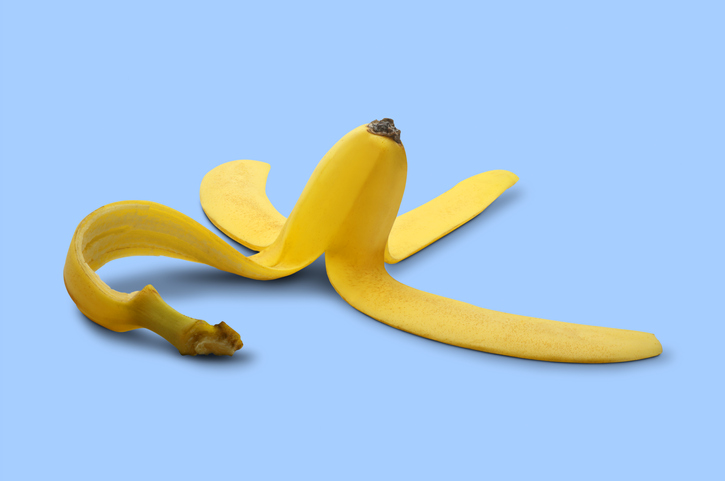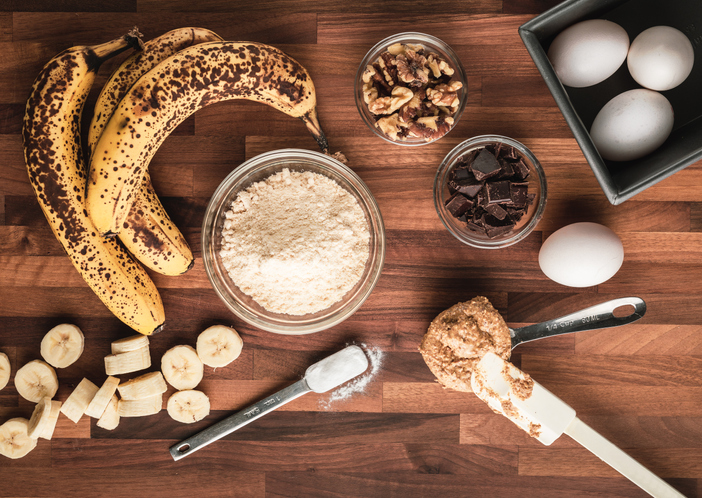Why You Need To Try Banana Peel Flour ASAP!

Just like there are many different types of milk, there are many different types of flour.
It can get a bit confusing, so let’s go over a few:
- All-purpose flour (also commonly called white flour). This is a basic flour made from processed wheat that can pretty much be used for any kind of baked good. All-purpose flour is stripped of most of its nutrients during processing.
- Almond flour. This flour is just made from ground almonds that have been blanched and peeled. Almond flour is available at most grocery stores, or you can make your own. Obviously, if you have a nut allergy this is not the flour option for you, but almond flour is a nice gluten-free option that is rich in healthy fat, protein, vitamin E and calcium. Almond flour cannot always be used interchangeably with all-purpose flour, so you just have to be mindful of the recipe you are following. Fortunately, there are so many online recipes and cookbooks that focus on using other flours besides white flour.
- Oat flour. Also gluten-free, this flour is made from ground oats. It is rich in fiber and very easy to make at home. All you have to do is blend oats until they are fine like powder. Oat flour is great in pancakes, waffles and muffins.
- Millet flour. Millet is an ancient grain. It is gluten-free and nutrient-dense. Again, you just have to look for recipes that specifically use this type of flour. You cannot simply replace all-purpose flour with any kind of flour alternative that you want.
There is also chickpea flour, rice flour, buckwheat flour, spelt flour, quinoa flour, amaranth flour and more. You definitely have your options. I really appreciate all of these options, because I try to limit my consumption of processed, nutrient-void foods such as white flour.
Recently, I learned that using the banana peel to make flour might be one of the best options yet.

Life is full of banana skins. You slip, you carry on." Daphne Guinness
I know the idea of consuming a banana peel might be unappetizing, but hear me out.
A recent study compared cookies enriched with banana peel flour with cookies that only had wheat flour. Banana peel flour is made from peels that have been blanched, dried and ground.
“When their experiment's products were taste-tested, consumers reported they were just as happy with the flavors as they were with peel-free sugar cookies,” according to this report that discusses the study.
“You'll even get a generous helping of minerals and cancer-fighting nutrients. Enriched with banana peels, for instance, the sugar cookies made in the study contained much more fiber, magnesium, potassium, and antioxidant compounds.”
Banana peel even contains vitamins B6 and B12. This is a great choice for vegans, as it can be difficult to come by plant-based sources of vitamin B12.
 Goals are like bananas. They come in bunches." Brendan Morrison
Goals are like bananas. They come in bunches." Brendan Morrison
I love this trend of using “throwaway parts” of foods. For example, check out this pH Labs blog on how to consume watermelon rinds. Some people may also use mango skin in baked goods or make mango skin chips.
Cooking this way may require more work, but it reduces food waste and makes treats such as cookies and muffins much healthier.
You might also want to consider using green banana flour. Green bananas are versatile and may be a great option for those who have diabetes.


Anything can happen. The great banana peel of existence is always on the floor somewhere." Robert Fulghum
Food scrapping can be healthy and innovative.
Because banana peel is rich in magnesium and this mineral is known for promoting restful sleep, some people are also jumping on the banana peel tea bandwagon as part of their bedtime ritual.
As always, consult a competent healthcare professional about new foods you may be introducing into your diet especially if you have any existing health issues and/or are taking any medications and if you are pregnant or breastfeeding.
Finally, check out 14 Food Scraps You Didn’t Know Were Edible. What a great way to further explore all of the healthy-nutrient-dense foods available to us and make them even more delicious and innovative. A great activity with kids to help them implement healthy eating would be to have them pick a scrap and make something with it.
Enjoy your healthy life!
The pH professional health care team includes recognized experts from a variety of health care and related disciplines, including physicians, attorneys, nutritionists, nurses, and certified fitness instructors. This team also includes the members of the pH Medical Advisory Board, which constantly monitors all pH programs, products, and services. To learn more about the pH Medical Advisory Board, click here.







